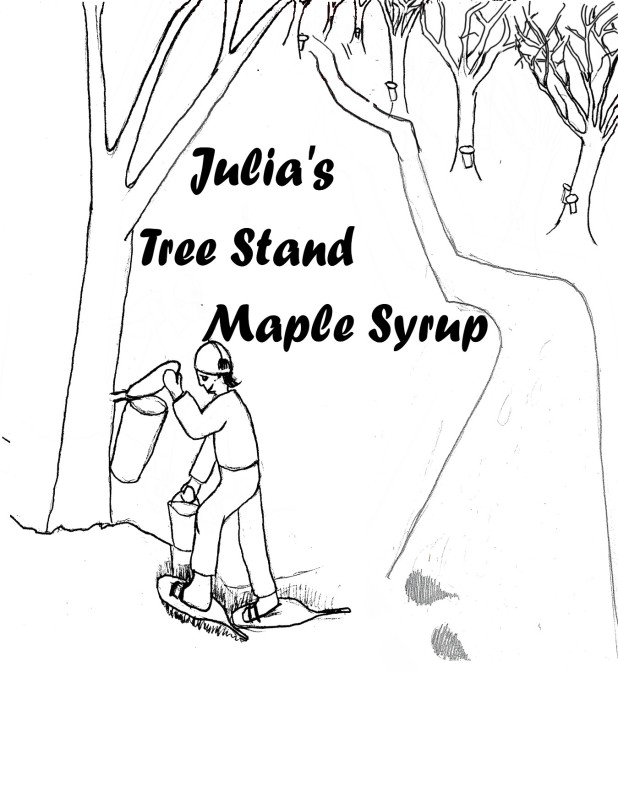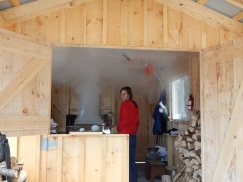Big days in maple syrup production are the boiling days. I should preface that statement, noting that ALL days in maple syrup production are big days from the many labor-intensive duties the process requires (fuel needs to be collected, the trees need to be tapped, the sap needs to be continually collected, the equipment needs to be sterilized), but I deter. The BIGGER days in maple syrup production are boiling days. As can be deduced from what is described below, it takes a lot of preparation!
Boiling days typically last from 8am to 3pm or later. On boiling days, one needs enough firewood to feed the fire in the evaporator approximately once every two minutes. For a full day of boiling that requires a lot of wood. To know roughly how much wood we will require let’s do bit of calculation: now, a cord of wood is defined as 12 inch pieces of wood piled 4 feet deep, by 4 feet high, by 8 feet long. Maple syrupers say that when using dry, split hardwood, evaporator efficiency is about 25 gallons of syrup per cord; 15 gallons of syrup per cord with dry, split softwood. We’re using some soft and some hardwood so I’ll average it out and say 20 gallons/cord. We have bout 125 taps up that will each produce on average 20 gallons of sap over the season. This will yield a grand total of 1875 gallons of sap (20 gal. x 125 trees = 2500 gal.). Divide that yield by 40 (40:1 sap:syrup ratio) and you get 62.5 gallons of syrup. Finally, divide 62.5 gallons by ~20 gallons per cord and you get 3.12 cords. All that is to say we will need a little more than 3 cords of wood this year. Now, all of these calculations are based on dry wood. This means before the boiling even takes place enough damaged trees need to be cut down and cut into logs which are then split, stacked, and dried. Drying wood takes more than a weekend, or even a month. Drying takes about a year of sun shining down on the wood, slowly evaporating moisture from the densely packed wood fibres.

Making maple syrup is not for the faint of heart. It requires lots of work, including felling, cutting, splitting and stacking wood for fuel the following year.
This year is going to be a bit unconventional for our maple syrup production. Since we just bought our evaporator this year, we don’t have that much stacked and dried fuel set aside specifically for burning in the evaporator. Luckily, we have some extra that hasn’t been used to heat the house this year that we can use for evaporator fuel. To be better prepared for next year my Dad and I have been in the bush a number of times lately, felling dead trees for fuel, cutting the wood into logs and splitting and stacking the wood to dry.
On boiling day, dry fuel wood burns furiously. The chimney attached to the rear of the evaporator in the sugar shack rises high above the roof-line to catch the airflow of the wind. This airflow draws the flames from the firebox of the evaporator, stretching the flames from the ‘arch’ as maple syrupers say, toward the back of the evaporator to the chimney. Since the evaporator is so long and the fire is positioned near the front, the flames get stretched/drawn-out almost horizontally towards the chimney, to almost a metre in length at times (witnessing the power of the blaze once it gets going is awe-inducing and makes me very glad we mounted a fire extinguisher on the wall within an arms reach for if things were to go awry!). It is this draw from the chimney that heats the length of the flue pans that sit atop the firebox and increases the efficiency of an evaporator. If wet or green wood were to be used instead of dry wood, the crisp, roaring fire that makes an evaporator so efficient would be replaced by a smoldering, smoking mess. Smoldering wood does not create nearly enough heat to evaporate sap into syrup, hence all the fuel preparation maple syrup requires!








